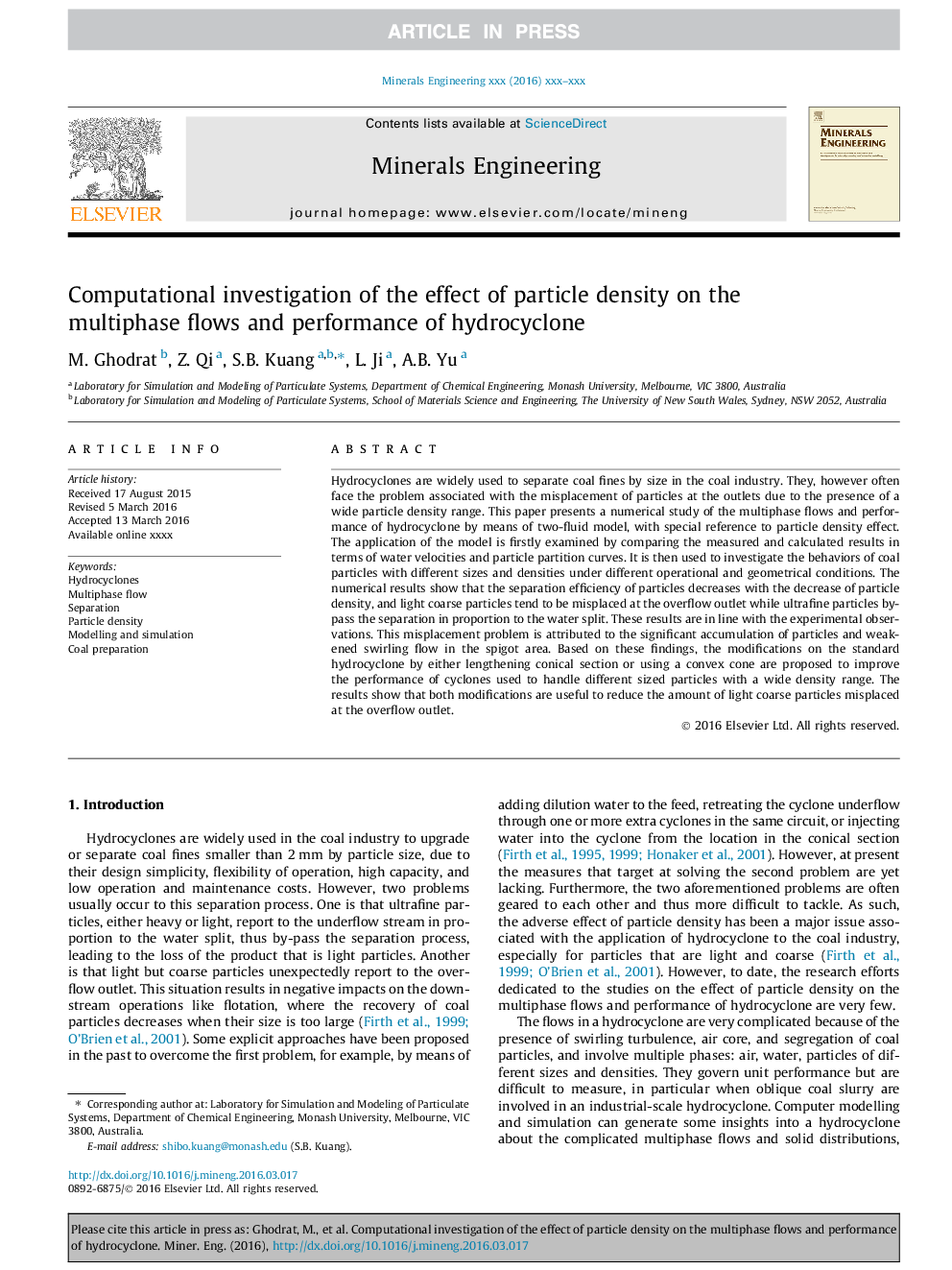| Article ID | Journal | Published Year | Pages | File Type |
|---|---|---|---|---|
| 6672881 | Minerals Engineering | 2016 | 15 Pages |
Abstract
Hydrocyclones are widely used to separate coal fines by size in the coal industry. They, however often face the problem associated with the misplacement of particles at the outlets due to the presence of a wide particle density range. This paper presents a numerical study of the multiphase flows and performance of hydrocyclone by means of two-fluid model, with special reference to particle density effect. The application of the model is firstly examined by comparing the measured and calculated results in terms of water velocities and particle partition curves. It is then used to investigate the behaviors of coal particles with different sizes and densities under different operational and geometrical conditions. The numerical results show that the separation efficiency of particles decreases with the decrease of particle density, and light coarse particles tend to be misplaced at the overflow outlet while ultrafine particles by-pass the separation in proportion to the water split. These results are in line with the experimental observations. This misplacement problem is attributed to the significant accumulation of particles and weakened swirling flow in the spigot area. Based on these findings, the modifications on the standard hydrocyclone by either lengthening conical section or using a convex cone are proposed to improve the performance of cyclones used to handle different sized particles with a wide density range. The results show that both modifications are useful to reduce the amount of light coarse particles misplaced at the overflow outlet.
Keywords
Related Topics
Physical Sciences and Engineering
Chemical Engineering
Chemical Engineering (General)
Authors
M. Ghodrat, Z. Qi, S.B. Kuang, L. Ji, A.B. Yu,
